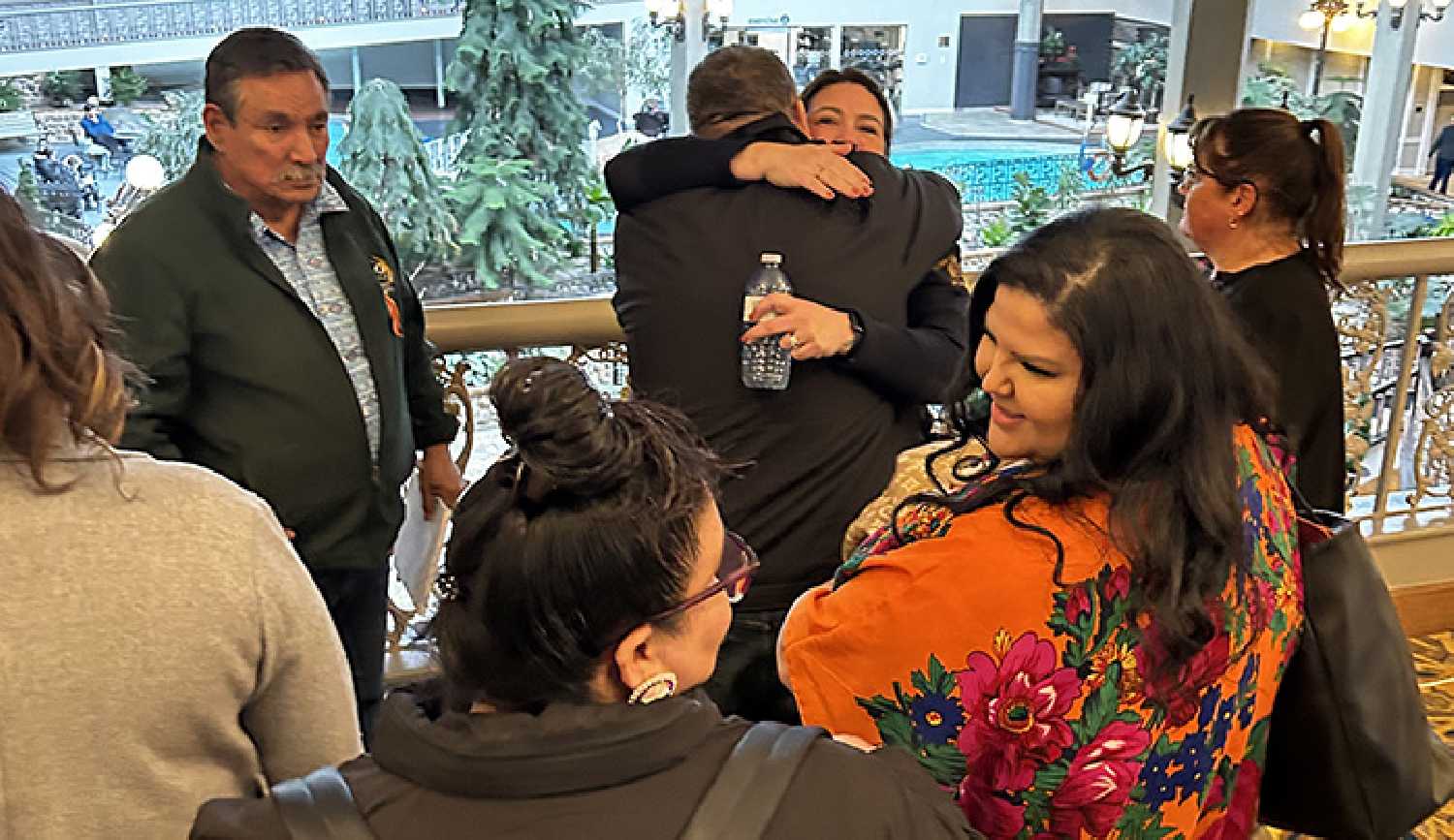High cocaine levels led to Sanderson’s death, inquest hears Police detail high-risk takedown on busy Sask. highway
February 28, 2024, 4:52 pm
Ryan Kiedrowski, Local Journalism Initiative Reporter


According to Saskatchewan’s Chief Forensic Pathologist, Myles Sanderson died from a high level of cocaine in his system; a possible trigger to underlying atherosclerosis, a narrowing of a heart artery. That’s what Dr. Shaun Ladham noted in his opinion during testimony at a coroner’s inquest into Sanderson’s in-custody death on Feb. 27.
No blunt-force trauma or signs of asphyxiation were noted from the autopsy report, nor were there signs of fractures or external injuries.
Forensic toxicologist Dr. Jennifer Billinsky agreed with Dr. Ladham’s findings, calling the level of cocaine in Sanderson’s system (6.5 mg per litre) the highest peak she’s viewed.
“That’s a very, very high reading,” Dr. Billinsky said in her testimony. “It’s one of the highest cocaine levels I’ve ever seen in my career at the Roy Romanow lab.”
She added that the cocaine was very strong, finding it 90 per cent pure.
Sanderson, 31, acted alone in murdering 11 people on the James Smith Cree Nation and nearby Village of Weldon on Sept. 4, 2022, leaving a further 17 attempted murders in the wake of his rampage.
After news of the stabbings were broadcast via emergency alert on the morning of Sept, 4, 2022, the entire province was gripped in panic as nobody could be absolutely sure of Sanderson’s whereabouts.
Three days following the horrible events in east-central Saskatchewan, police surrounded the vehicle Sanderson was operating near Hague. As RCMP were in the process of arresting Sanderson, he had a medical emergency and ultimately died in custody. Whenever an in-custody death occurs in this province, a coroner’s inquest is ordered to discover facts about what occurred, including witness testimony.
A separate coroner’s inquest happened over three weeks in January, focussing on the 11 deaths. The Melfort inquest was also the first time family and members of the public heard facts from a police investigation.
High-risk takedown
The second day of the Saskatoon inquest began with Detective Sergeant Kenneth Kane of the Saskatoon Police Service detailing the vehicular takedown and arrest of Sanderson. The SPS was tasked with investigating the events leading up to Sanderson’s death as a third party separate from the RCMP, who were the attending police service.
He explained how despite travelling at speeds hitting 160 km/h, RCMP were able to execute a “pit maneuver” in order to bring the half ton truck Sanderson was operating to an immediate stop. Sanderson was operating a white 2008 Chevrolet Avalanche while Cst. Heidi Marshall pursued him in a 2021 Ford Explorer along with two other RCMP vehicles. During the flight from police, Sanderson had been at times travelling southbound on Highway 11 in the opposite flow of traffic. Given the high rate of speed, Kane explained that oncoming vehicles may have had around 10 seconds to notice and react to a speeding truck coming towards them on the two-lane highway.
“Once close enough, the Explorer made contact,” Kane detailed. “It is important to note that the contact was not sudden nor hard, the impact was light, which then transitioned into the push. The pushing action by the Explorer caused the truck to rotate clockwise around the front of the Explorer. This allowed the RCMP officer to escape the maneuver and decelerate at a safe rate as the Avalanche continued self on the highway while rotating.”
The Avalanche then came to rest in the ditch, miraculously avoiding a rollover. Minimal damage was noted on both vehicles involved with the truck Sanderson drove noting a broken taillight, some rubber transfer from the police efforts and a bent exhaust pipe from going into the ditch. The RCMP vehicle noted a crumpled front bumper, lighting assembly damage and cracks to a corner panel.
“The damage here seems to be extraordinarily limited,” Kane noted, noting of the police vehicle “I would refer to it as cosmetic damage, really.”
Representing Coroner’s Counsel, Timothy Hawryluk asked Kane about his personal experience in training for such driving situations. Kane had in fact been trained in performing a pit maneuver, but added they are used at low speeds. He noted anything over 80 km per hour would be considered dangerous, that Cst. Marshall’s actions were “last resort” when no other option was present.
“At that point, the outcome is not reliable, meaning it is unknown,” remarked Kane.“So to say that she perfectly executed this is not an overstatement, it’s exactly what happened. The fact that she did it at this speed with with that ability is frankly quite unbelievable and so it definitely is the the best outcome.”
While an operational success, Cst. Marshall noted having her children on her mind as the pursuit first engaged the wrong way down Highway 11.
“While I was on the road, I was thinking, ‘this could be it’,” she recalled. “The one thing in my life that I always wanted was to be a mom. I did not want to leave my family without a mom.”
Immediately after the vehicle was disabled, police descended upon the driver’s side of the truck - complete with two RCMP vehicles providing rolling cover.
RCMP managed to remove Sanderson from the truck, however just a few minutes into the arrest, his health began to degrade.
“You should’ve shot me,” Sanderson told officers while being held against an RCMP vehicle as police searched his person. After uttering those words, Sanderson began to convulse on the ground with blood flowing from his nose.
Via video and audio from an RCMP Watchguard system, officers call for medical help, asking Sanderson if he took anything. The barely audible response of “meth” could be heard, perhaps the man’s final spoken word.
Medical crews transported Sanderson to Royal University Hospital in Saskatoon where he ultimately succumbed to the impact of the narcotics, despite Naloxone being administered twice.
According to Dr. Ladham, the Naloxone would have made no difference to Sanderson, explaining that it acts against opioid receptors (morphine or fentanyl, for example).
“It wouldn’t have changed what happened in this case,” he said.
The last moments of the day saw family members reaching out with support. Eddie Head, representing the family of Beverly Burns, has standing at the inquest. When asked if he had any questions for Cst. Marshall, he spoke of members of JSCN also going through their own emotional process.
“We support you for what your doing, keep up the good work,” Head told Cst. Marshall, extending an invitation to JSCN in the spirit of healing. “You’re not alone, come and talk to us.”
The inquest in Saskatoon is scheduled to last until Friday, when jurors will decide the circumstances of Sanderson’s in-custody death and possibly relay recommendations to avoid future outcomes.



































